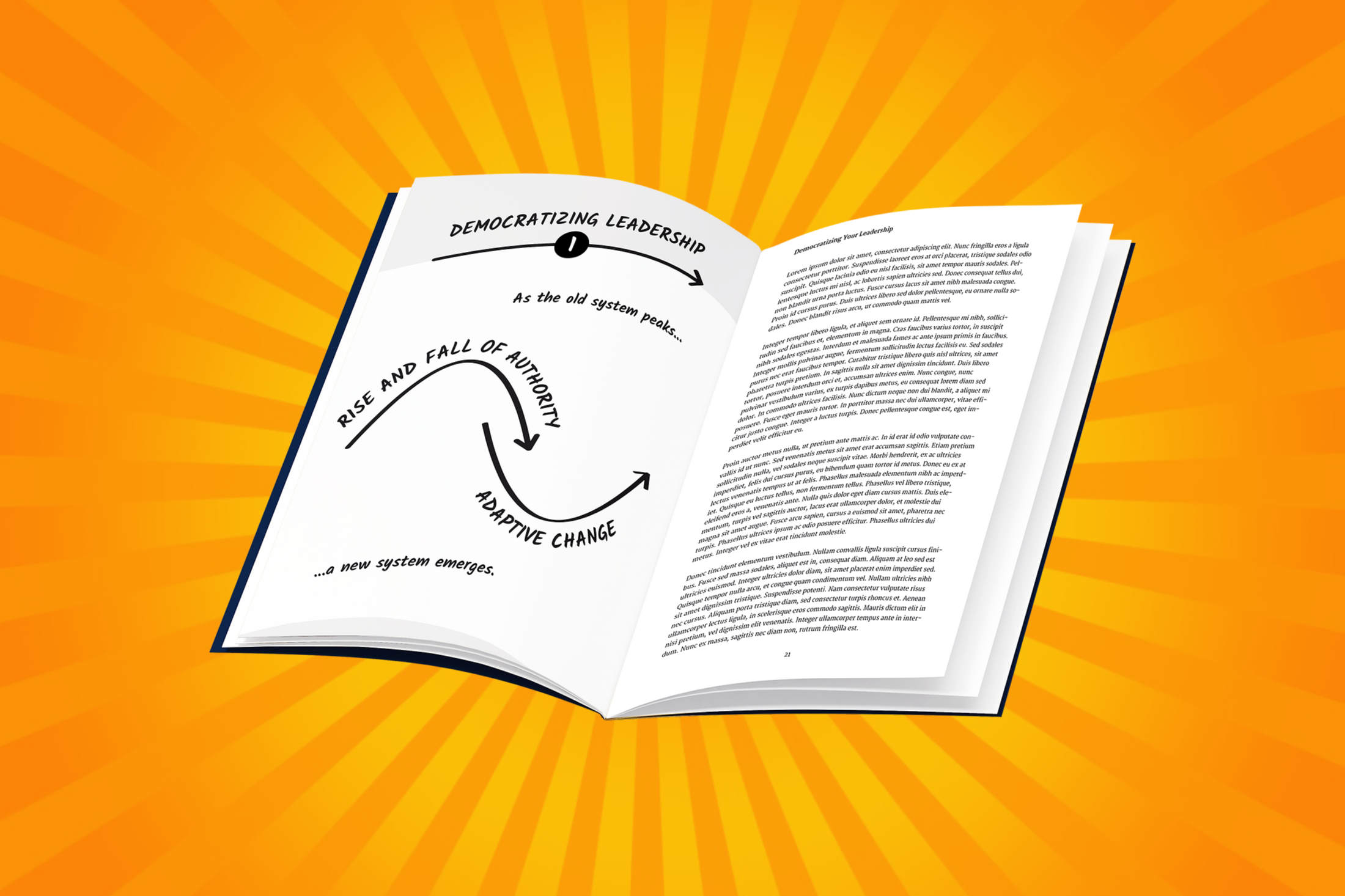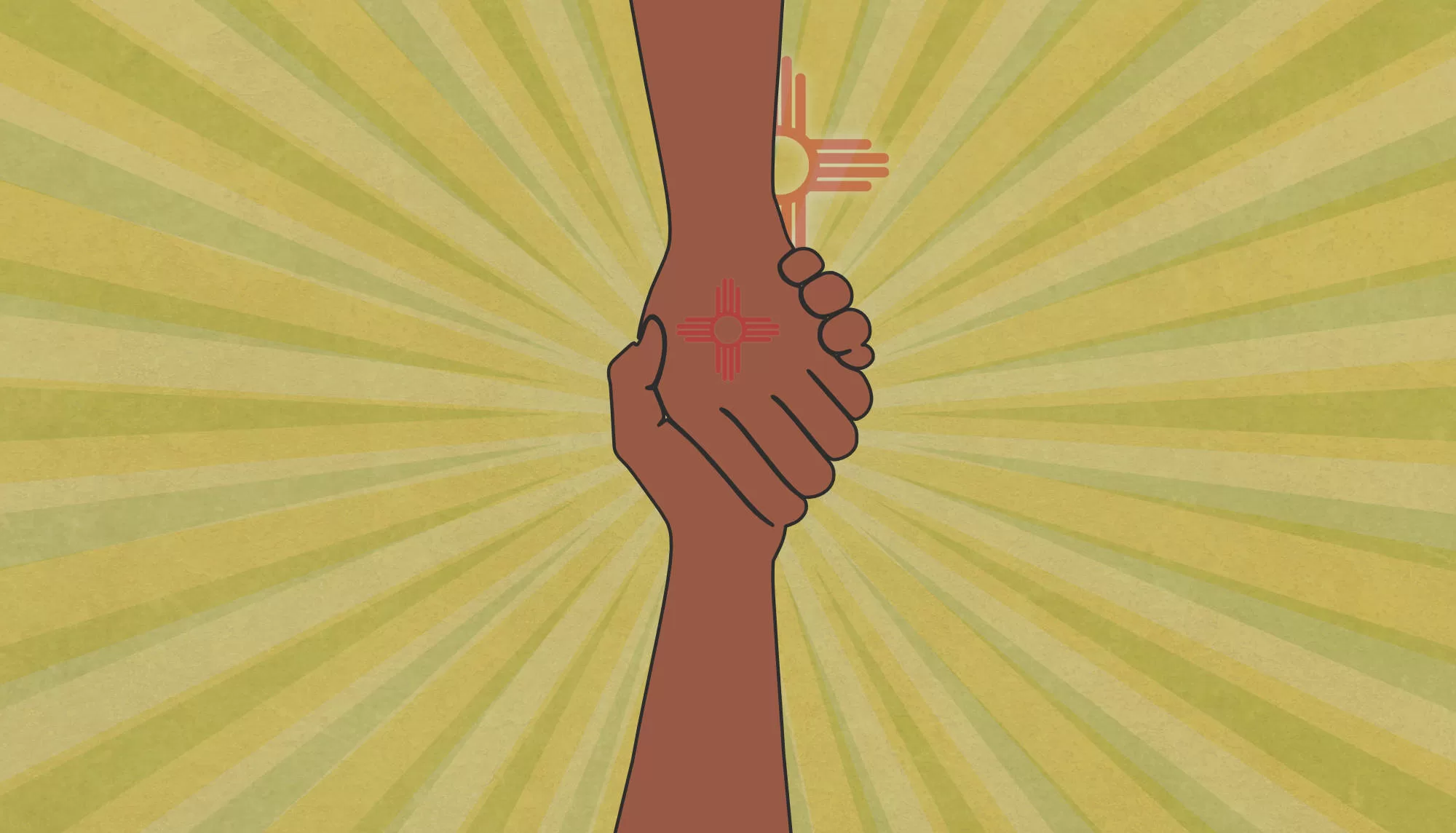Leveraging Your Leadership Moment
In this era of transition and possibility, we explore the need for a new kind of leadership with Eric Martin from Adaptive Change Advisors.
Each daily visit to our streaming news brings with it colliding crises from across the world. How do you teach local leadership to tackle and live up to the challenges and opportunity at hand?
Eric Martin’s expertise is in democratizing leadership, making it possible for anyone to create positive change. He has a long history with New Mexico, having worked with leadership in child welfare a decade ago. His goal then was empowering people at the frontlines of the state’s child protective services to assess challenges and work collaboratively to solve them.
In this post-pandemic phase, an extraordinary opportunity exists to leverage new voices of leadership at the local level to “build back better.” Eric’s book Your Leadership Moment serves as a valuable guide for discovering how you can mobilize people to collaborate on projects that will make a difference in the lives of all our children and families.
The Anna, Age Eight Institute reached out to Eric about our 100% New Mexico initiative work. He has had the opportunity to talk to people who are exercising leadership across the state in our 100% coalitions, including a recent visit with change agents in Doña Ana County. Here’s what Eric has to say about what leadership looks like in this time of transition and possibility.
Question: Our work to ensure vital services depends on building partnerships between 100% New Mexico initiative action teams and elected local leaders. When you talk about “democratizing leadership,” what does that look like within the initiative, in city hall and a county commissioners meeting hall?
Eric Martin: The kind of change that the Anna, Age Eight Institute seeks can only come from the margins of our communities. Everyone and every place that has been sidelined or kept out of the conversation needs to be brought back in. Elected and appointed officials, city managers, and others who hold positions of power can use their influence to lift up these voices. Ensuring that these authentic voices are heard and acted upon at the decision-making table requires an extraordinary kind of leadership at all levels within our communities.
Question: In your book you describe leadership as risky, calling us to challenge the status quo. What might that mean to initiative action teams seeking to remove barriers to vital family services?
Eric Martin: Here’s a funny paradox when it comes to removing barriers: there’s no such thing as a dysfunctional system. Every system, every organization is perfectly designed to get the results that it gets. What this means, then, is that barriers exist for a reason. What is that reason? Who benefits from the seeming dysfunction? Who might need to give up something in the name of progress? This is risky stuff. Initiative action teams who tackle these issues with an abundant amount of honesty, respect, patience, understanding, and courage will create the conditions for vital services to take hold and thrive.
Question: You share that at times the solution to a problem might elude us because the root causes have been misdiagnosed. What is an example of this that our initiative participants might encounter?
Eric Martin: Well, it would be presumptuous of me to pretend to know what people are encountering. That said, with big change initiatives like this one, I see a fair share of band-aid approaches. So much so that we actually have a name for them, technical fixes.
Let me give you a hypothetical example. Let’s say Daniel works for the city, assigned by the mayor to create bike lanes in the downtown shopping area. Daniel is excited and has the budget to buy all the materials and hire the team to make it happen.
Happy times for Daniel? Well, he has solved the technical problem as he secured the budget and contractors to do the job. But an adaptive challenge remains in the form of mobilizing key stakeholders. An adaptive problem is one that involves shifts in behaviors and priorities, dealing with loss, and building relationships with people who are close to the problem.
Daniel did not do the adaptive work. He didn’t bother to tell the business owners downtown about this bike lane plan — a plan that takes away parking in front of stores. Angry business people seeing painting crews called the mayor complaining. The bike lane project was put on hold.
If Daniel had taken the time to meet with all the business owners, to discuss the benefits of the bike lane plan, to hear their concerns and potential losses, he might have obtained their support, or, at the very least, better planned for their resistance. Instead, the mayor’s political capital is spent and it will take a long time before he can pitch bike lanes again.
Question: With adaptive leadership, one of the main objectives is to differentiate between these technical challenges and adaptive challenges. Why is that important with the work of 100% New Mexico?
Eric Martin: First and foremost, putting technical solutions on adaptive challenges is the single biggest mistake people make when leading change. It’s also the biggest waste of time and waste of resources… the most important of which is the resource of people’s hope and life energy.
I saw this everyday growing up in the city of Detroit at the height of its decline. The city was literally burning to the ground daily in front of my eyes. The futility of technical solutions, i.e. putting out fires, was brought home for me, literally, on mornings when Dad returned from work at the firehouse. The city’s decay wafted into my bedroom in the form of the sweet scent of firetruck diesel and smoke from the previous night’s fires. Now, Dad was considered a hero, one of the best firefighters the city ever had. Yet, as the fires continued to burn night in and night out, and as I grew older, I realized that few people were curious about the reasons for the fires. How often do we too fight the day-to-day fires without lifting up our heads to see the bigger adaptive challenge?
When it comes to 100% New Mexico, particularly the availability of funding to build ten vital services, the state is fortunate to have had a bumper year in oil and gas revenue. Money, however, is a technical fix. The adaptive challenge to ensuring ten vital services resides in the hearts, minds, and guts of each and every member of our communities. It’s about being willing to take a stand, make a difficult decision, have a courage conversation, and, ultimately, realize that we are the problem. The good news is that we’re also the solution. Especially when the we includes the people who come up against the barriers every day.
Question: With the nonprofit sector there exists competition for limited resources. Our initiative requires collaboration between local organizations serving ten sectors. How does one address competition in order to fully mobilize and unite in the goal of ensuring vital services?
Eric Martin: You’re putting your finger on one of the trickier adaptive challenges in the 100% initiative. Competition is definitely part of human nature, a healthy part even. It has a necessary and vital role. Not just in human society, but in nature too. In nature, competition is part of a larger picture. For example, weeds compete with crops for nutrients. However they also hold down soil, prevent erosion, and actually restore depleted nutrients to the soil.
But, we often add additional unneeded competition into the system, suppressing the growth and creativity of others. When our well-being and ability to engage communities depends on blocking out others so we can “get our share,” competition becomes like a cut-throat game of musical chairs.
Imagine, instead, a game of musical chairs with one thousand people and one thousand chairs of different shapes and sizes and the game is a matter of matching the right person to the right chair. This is what the 100% New Mexico initiative is like. What would “human nature” look like then? Who likes a soft seat? Who likes firm? Who has long legs? Who has large buttocks? The play of the game would look very different. It would involve a lot of communication and cooperation. Different structures would emerge to match the right person with each chair. There might still be some competition, but it wouldn’t be baked into the rules of the game.
How do we create conditions to bring forth the healthy aspects of competition? Practically speaking, it begins with an honest conversation about that natural tension we all feel between doing the right thing, on the one hand, and, on the other hand, providing for ourselves, our teams, and our constituencies. This is not something to be ashamed of but rather addressed openly and with humility.
There’s an even deeper truth to all of this. True wealth means being able to give freely of our time, talents, gifts, and energy, without worrying about it. We saw this in some places in the early months of the pandemic. We see it in other moments of crisis. We also see it every day in many of the long-standing communities and cultural traditions in the good state of New Mexico. This state is abundant with resources well beyond its economic coffers. The 100% initiative is unleashing these resources, and replenishing them for the future by providing access to vital services.
Question: When you talk about “letting go” in order to bring about something new, can you give examples of that from your work?
Eric Martin: When we set out to tackle adaptive challenges, we unleash an extraordinary amount of latent energy and passion. This kind of resource is what makes a lasting, life changing difference.
Making a difference, particularly when it involves challenging the status quo, can also come with a cost. We who engage in leadership moments speak up, stand up, or ask questions that no one else will. Sometimes, we even take a knee in a form of patriotic protest. In exchange for our willingness to take a stand on behalf of something bigger than ourselves, we often pay a price…
Financially – with decreased budgets, loss of income, or otherwise being financially sidelined, and stripped of financial access.
Politically – with both subtle and overt smear campaigns that compromise reputations, relationships, and trust that may have taken years or decades to build.
Professionally – with diminished growth opportunities, wounding our upward mobility and, in the worst-case scenario, ending brilliant careers.
Personally – with damages to the healthy side of ego, or the side that makes you want to take a stand in the first place.
It can take years to recover from failure, not to mention financial, political and professional costs. However, we also pay a price when we turn a blind eye to the people amongst us who pay the price for our blindness.
Are we willing to explore the limits of our sense of comfort, our doubt, our mindset of scarcity? Are we willing to let go of the “way things are done around here,” even a little bit, in order to create the possibility for real change? Do we need our return on sacrifice to come immediately in order to make it worthwhile to lead adaptively now, to provide ten vital services for all children now, not just one service or one group of children? To talk about this is to flirt with actual, and not rhetorical, change.
Question: There are also rewards for taking a leadership stand, both personally and for the public. Can you discuss those?
Eric Martin: Absolutely! There are two sides (or many more) to everything, including taking a bold leadership stand. We need to look no further than the 100% initiative itself to see what can happen when people stand for something bigger than themselves or their own organization. By aligning with adaptive leadership-minded political officials, stakeholders, and funders, new and strengthened support can become available for promising initiatives. Although such people may be in the minority at the moment, they are respected voices who can help expand alliances with other organizations who are taking a strong stand for social justice.
Professional and personally, there’s tremendous satisfaction and fulfillment that comes with working in collaboration on adaptive challenges. My fondest memories from when I worked with county teams in New Mexico was hearing veteran supervisors and workers remark after tackling significant adaptive challenges in state child welfare, “Now I remember the reason that I got into this line of work so many years ago!”
Our work ahead
Within our 100% New Mexico initiative our participants are facing both technical and adaptive challenges. With Eric’s insights on leadership and the importance of collaboration, our county change agents are better prepared to develop projects that have buy-in with elected leaders and stakeholders. In this “build back better” phase, a new type of leadership is required in order to bring all our communities together to create a seamless system of care. For more information about workshops on adaptive leadership, please contact us.
Mission: The 100% New Mexico initiative is dedicated to ensuring that 100% of families can access ten vital services crucial for their overall health, resilience, and success. This university-sponsored endeavor necessitates the local implementation of evidence-based strategies encompassing both community and school-based service hubs, aiming to prevent the most pressing and costly public health and safety challenges, including adverse social determinants of health and adverse childhood experiences.
Don’t miss a blog post! Get notified!
The 100% New Mexico initiative is a program of the Anna, Age Eight Institute at New Mexico State University, College of Agricultural, Consumer and Environmental Sciences, Cooperative Extension Service. Contact: annaageeight@nmsu.edu or visit annaageeight.nmsu.edu to learn more.





